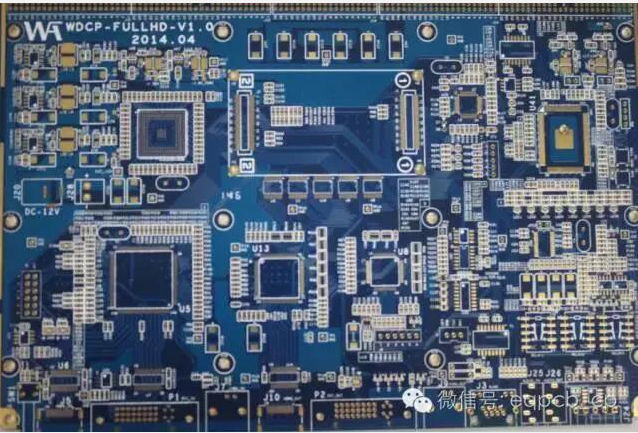If you find that the PCB design experience accumulated in the previous low-speed era seems impossible now, the same PCB design, there was no problem before, but it does not work normally, then congratulations, you have encountered the most core PCB hardware design problem: Signal integrity.
It is a good thing that you meet one day in advance. In the past low-speed time, when the level jumps, the signal rise time usually increases by a few ns. The interconnection between the devices does not affect the function of the circuit, and there is no need to care about signal integrity issues. But in today's high-speed era, with the increase of IC output switching speed, many are in the picosecond level, regardless of the signal period, almost all designs have encountered signal integrity problems. In addition, the pursuit of low power consumption makes the core voltage lower and lower, and the 1.2v core voltage has become very common.

Therefore, the noise tolerance of the system can become smaller and smaller, which also makes the signal integrity problem more prominent. Broadly speaking, signal integrity refers to all the problems caused by interconnection in circuit design. It mainly studies how the electrical characteristic parameters of the interconnection interact with the voltage and current waveforms of the digital signal, and how it affects the performance of the product.
It is mainly manifested in time sequence, signal ringing, signal reflection, near-end crosstalk, far-end crosstalk, switching noise, non-monotonicity, ground bounce, power bounce, attenuation, capacitive load, electromagnetic radiation, electromagnetic interference, etc. Impact. and many more. The root of the signal integrity problem lies in the reduction of the signal rise time.
Even if the wiring topology has not changed, if an IC chip with a small signal rise time is used, the existing design will be in a critical state or stop working.
The following are some common signal integrity issues. Waveform distortion caused by signal reflection. It looks like it is ringing, take out the circuit board you made, measure various signals, such as clock output or high-speed data line output, to see if this waveform exists.
If so, then you should have a perceptual understanding of signal integrity issues, yes, this is a signal integrity issue. Many hardware engineers connect a small resistor to the clock output signal, and as for why, many people can't tell, they will say that many mature designs have it. Maybe you know, but many people can't tell the function of this small resistor, including many hardware engineers with three or four years of experience. Is this surprising? But it is true, I have encountered a lot. In fact, the function of this small resistance is to solve the problem of signal reflection. As the resistance increases, the ringing will disappear, but you will find that the rising signal is no longer so steep. This solution is called impedance matching, O. On the right side, we must pay attention to impedance matching. Impedance occupies an extremely important position in the signal integrity problem. Crosstalk: If you are careful enough, you will find that sometimes for the signal line, there is no function to output the signal, but in the measurement, there will be a small part of the regular waveform, as if there is a signal output. At this point, you can measure the signal line adjacent to it to see if there is a similar pattern! Yes, if the two signal lines are very close, it usually will. This is crosstalk. Of course, the waveform on the signal line affected by crosstalk is not necessarily similar to the waveform of the adjacent signal, nor does it necessarily have obvious rules, and it is more in the form of noise. Crosstalk has always been a headache for today's high-density circuit boards. Because of the small wiring space, the signals must be very close, so you can only control it, but you can't eliminate it, rather than face it.
For crosstalk signal lines, the interference from adjacent signals is equivalent to the noise to him. The amount of crosstalk is related to many factors on the circuit board, not just the distance between the two signal lines. Of course, distance is the easiest to control and the most common way to solve crosstalk, but it is not the only way. This is also something that many PCB engineers misunderstand.
Track collapse: Noise not only exists in the signal network, but also in the power distribution system. We know that the current flowing through the path between the power supply and the ground inevitably has impedance, unless you can turn everything on the circuit board into a superconductor. Then, when the current changes, a voltage drop will inevitably occur, so the voltage actually sent to the chip's power pin will decrease, sometimes even greatly, just like the voltage suddenly collapses, which is the rail collapse. Track crashes can sometimes cause fatal problems and may affect the function of the circuit board. The number of gates integrated by high-performance processors is increasing, the switching speed is increasing faster, and more switching current is consumed in a shorter time, and the tolerable noise becomes smaller and smaller. However, due to the harsh requirements of high-performance processors on the power system and the difficulty of constructing a power distribution system with lower impedance, noise control has become increasingly difficult.
You may have noticed that it is impedance again, and understanding impedance is the key to understanding PCB signal integrity issues. l